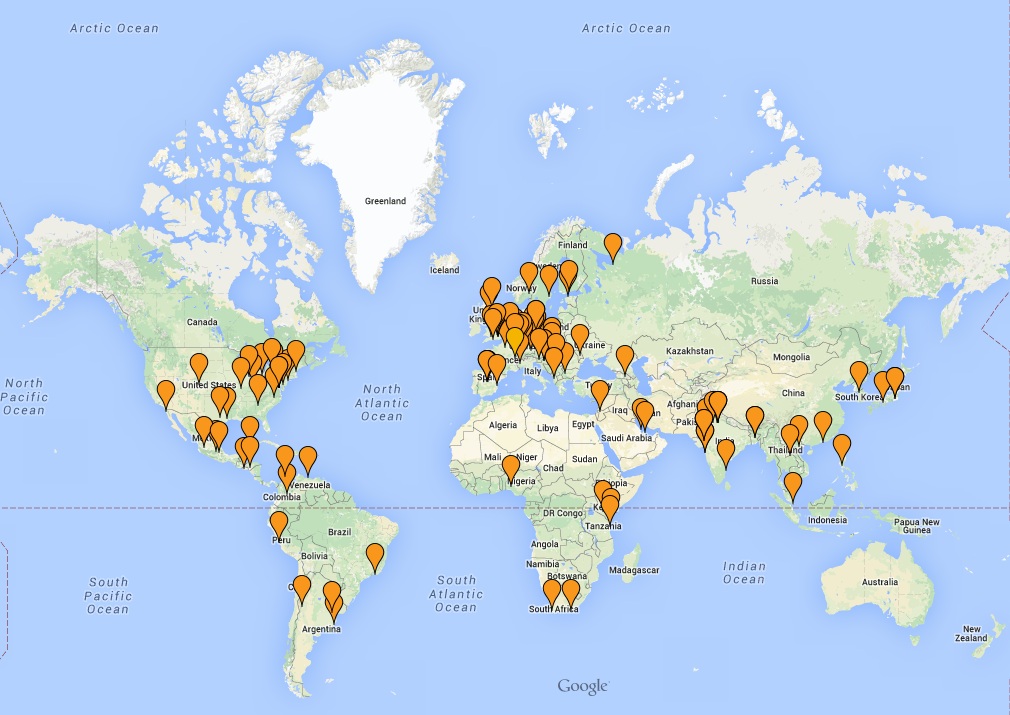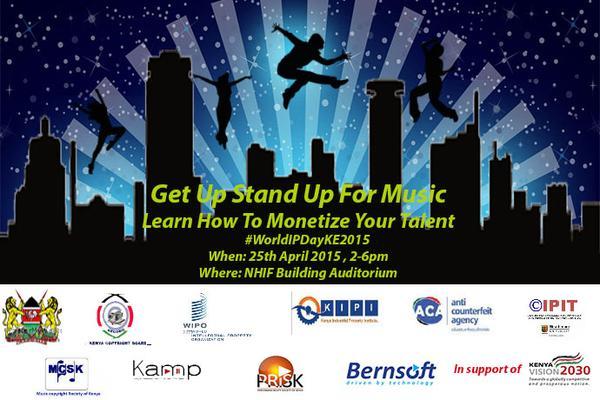
As many may already know, every April 26 Kenya joins the rest of the globe to celebrate World Intellectual Property Day as a means of promoting discussion of the role of intellectual property (IP) in encouraging innovation and creativity.
As discussed previously, the theme selected by the World Intellectual Property Organization (WIPO) for this year’s World IP Day is: “Get up, stand up. For music”. According to WIPO, music is the “most universal of creative expressions” which “transcends borders and connects with some primal beat within all of us”. Through this theme, WIPO also appears to be paying tribute to the “inspiration and hard work of thousands of creative people around the world – singers and songwriters; musicians and publishers; producers, arrangers, engineers and many others” who are responsible for the music that we enjoy today. This year’s World IP Day theme invites us all to explore some of the changes shaping the music industry today, and interact with those intimately involved in the business of making music about how they see the future.
The above map by WIPO (available here) shows some of the activities and events planned by countries across the world to celebrate World IP Day 2015. It is sad to note that the African continent, made up of 54 countries, has only registered a paltry 6 events with Kenya and South Africa holding 2 events each and two other events planned in Tanzania and Nigeria. Sadly, the creators and innovators in African countries, led by their respective IP offices, would benefit greatly from using the World IP Day as an opportunity to educate and empower their people to harness the power of IP as a tool for economic and social development.
This blogger submits that a crucial sub-theme for this year’s World IP Day is the question of piracy. The unauthorized commercial use of copyright popularly known as piracy is an infringement of Copyright. In simple terms, piracy occurs when a person who is not the author of copyright works, and who has not been authorized by the author reproduces, sells, distributes or communicates to the public such works for financial gain. It also includes the manufacture and distribution of devices used to perpetrate acts of piracy. Piracy is a big problem in Kenya.
Although it permeates the entire copyright sector, the music industry with a piracy rate of 98%, is by far the most affected. Music pirates are fierce and aggressive. It is alleged that in certain instances they release pirated copies even before the genuine product hits the market. There are various categories of piracy. One is where a person has a complete reproduction facility with several duplicators, a printing press complete with a paper cutting machine, a design site and packaging materials. This pirate doubles up as a distributor of the pirated works. He also employs hawkers who set-up temporary stands in estates and other outlets. Their replication facilities are usually in deserted buildings or their homes. Their products are simple CDS, DVDS and VCDs with, single leaf covers indicating the songs covered with a transparent cover. The content is made up of hit songs. The second category consists of pirates with a similar outfit as described above. However, here, the pirate makes an exact replica of the original works. The third type is where a hawker or shop owner who keeps a computer, printer and scanner at either his business or residential premises. He/she buys an original CD/VCD which serves as a master to reproduce and replenish his stock.

This year, during the World IP Day celebrations in Kenya, the national IP offices led by Kenya Copyright Board (KECOBO) have organised an event on April 25th 2015 under the sub theme: “Learn How to Monetize Your Talent”. Thereafter the Ministry of Sports, Culture and the Arts will hold a validation forum for Kenya’s first ever National Music Policy. A copy of the policy is available online here. Our previous comments on the draft Music Policy are available here and here.